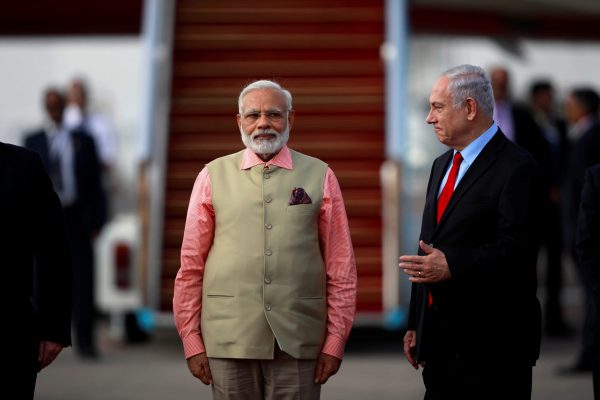In some ways, things haven’t quite worked out in the manner Modi would have liked. His Pakistan policy seems stuck in a quagmire. China’s increasing forays into the Indian ocean region have also worried New Delhi, particularly in light of Beijing’s so-called ‘string of pearls’ strategy of helping to build ports in Pakistan, Sri Lanka and Bangladesh. But on the other hand, India has concluded the landmark Land Boundary Agreement with Bangladesh, which has resolved the border dispute with Dhaka once and for all. India was also quick in responding to the massive earthquake that struck Nepal in April 2015. Another important achievement has been India’s membership in the Shanghai Cooperation Organisation.
But the biggest improvements in India’s foreign relations seem to have been with Japan, the first country outside India’s immediate neighbourhood which Modi visited after he took office. New Delhi and Tokyo concluded a landmark civilian nuclear deal in November 2016, a big development for Japan as the only country to have suffered directly from atomic weapons. The two countries are also collaborating in the development of the Trincomalee Port in Sri Lanka, while Tokyo has expressed an interest in the Chabahar Port being developed by India. Under Modi, the former Look East Policy has been renamed the Act East Policy.
Modi has also successfully repaired New Delhi’s ties with Washington, which faltered toward the end of the previous Indian government. When former US president Barack Obama sat as the chief guest at India’s Republic Day celebrations in January 2015, the US–India joint statement issued affirmed ‘the importance of safeguarding maritime security and ensuring freedom of navigation and overflight throughout the region, especially in the South China Sea’. This was a big change for New Delhi, which had previously avoided direct mentions of the South China Sea. India has also concluded a landmark deal with the United States that will allow troops from the two countries to use designated military facilities on a reciprocal basis. Movements such as these clearly show that New Delhi may well have jettisoned non-alignment.
On top of all this, India has tried to reach out to Africa in a big way. The third India–Africa Summit held in New Delhi in 2015 had representation from all 54 African countries that have diplomatic relations with India. New Delhi has extended 152 lines of credit to 44 African nations worth close to US$8 billion. India is now collaborating with Japan in the Asia–Africa Growth Corridor, which some observers see as an alternative to China’s Belt and Road Initiative.
Modi has also visited many countries that were ignored by previous governments. He became the first Indian prime minister to visit Mongolia — where he announced a US$1 billion line of credit — the first Indian prime minister to visit the United Arab Emirates in 34 years, and the first to visit Spain since 1988. Modi’s recent visit to Israel could prove a game changer, with no Indian prime minister having ever visited before.
But despite these successes, quite a few challenges remain on the foreign policy front for Modi.
Relations with China are the biggest, especially in light of the construction of the China–Pakistan Economic Corridor as a part of the Belt and Road Initiative. New Delhi has not been happy with Beijing blocking both India’s membership in the Nuclear Suppliers’ Group and its bid at the United Nations to designate Jaish-e-Mohammed Chief Masood Azhar as a global terrorist. By boycotting the Belt and Road Forum in Beijing in May 2017, it is clear that Modi has laid down red lines in India’s ties with China.
Second, relations with Pakistan have run into a logjam in the aftermath of the attacks on the Pathankot Air Force base in India in early January 2016 and the Uri Army base in September 2016 by terrorists operating out of Pakistan. In response, India conducted surgical strikes on terrorist camps in Pakistan-occupied Kashmir.
Third, relations with the United States under the maverick President Donald Trump remain a challenge. Trump has chided India for trying to extract ‘billions and billions and billions’ of dollars in foreign aid from the developed world in return for signing up to the Paris climate accord. And Trump’s stance on the H-1B visa issue hasn’t been very helpful either.
Fourth, while the Indian economy has been doing well during Modi’s term, New Delhi does not seem to be in a hurry with regards to regional arrangements such as the Regional Comprehensive Economic Partnership (RCEP) now that the United States has pulled out of the rival Trans-Pacific Partnership (TPP). New Delhi will have to learn to seize the advantage when it comes to regional trading arrangements so that it isn’t seen as a kind of spoiler.
Amid these challenges, infrastructure development will be key for India. Although the government has made progress, especially in the border regions, things need to be scaled up if India is to catch up with Beijing. To mark his three years in office, Modi inaugurated India’s longest bridge over the Lohit River in the northeastern state of Assam. At the same time, work is going at full pace on the India–Myanmar–Thailand trilateral highway, which will give India unfettered access to Southeast Asia.
The Modi government’s most notable success has been the new energy injected into the foreign policy front. He has relied heavily on personal chemistry in this domain, especially with leaders such as Japanese Prime Minister Shinzo Abe and former US president Barack Obama. But it remains to be seen how many of these foreign policy breakthroughs will be translated into concrete results by the end of his present term in 2019. As they say, well begun is half-done.
Rupakjyoti Borah is a visiting research fellow at the Institute of South Asian Studies at the National University of Singapore (NUS).
This article first appeared here on Global Asia.

